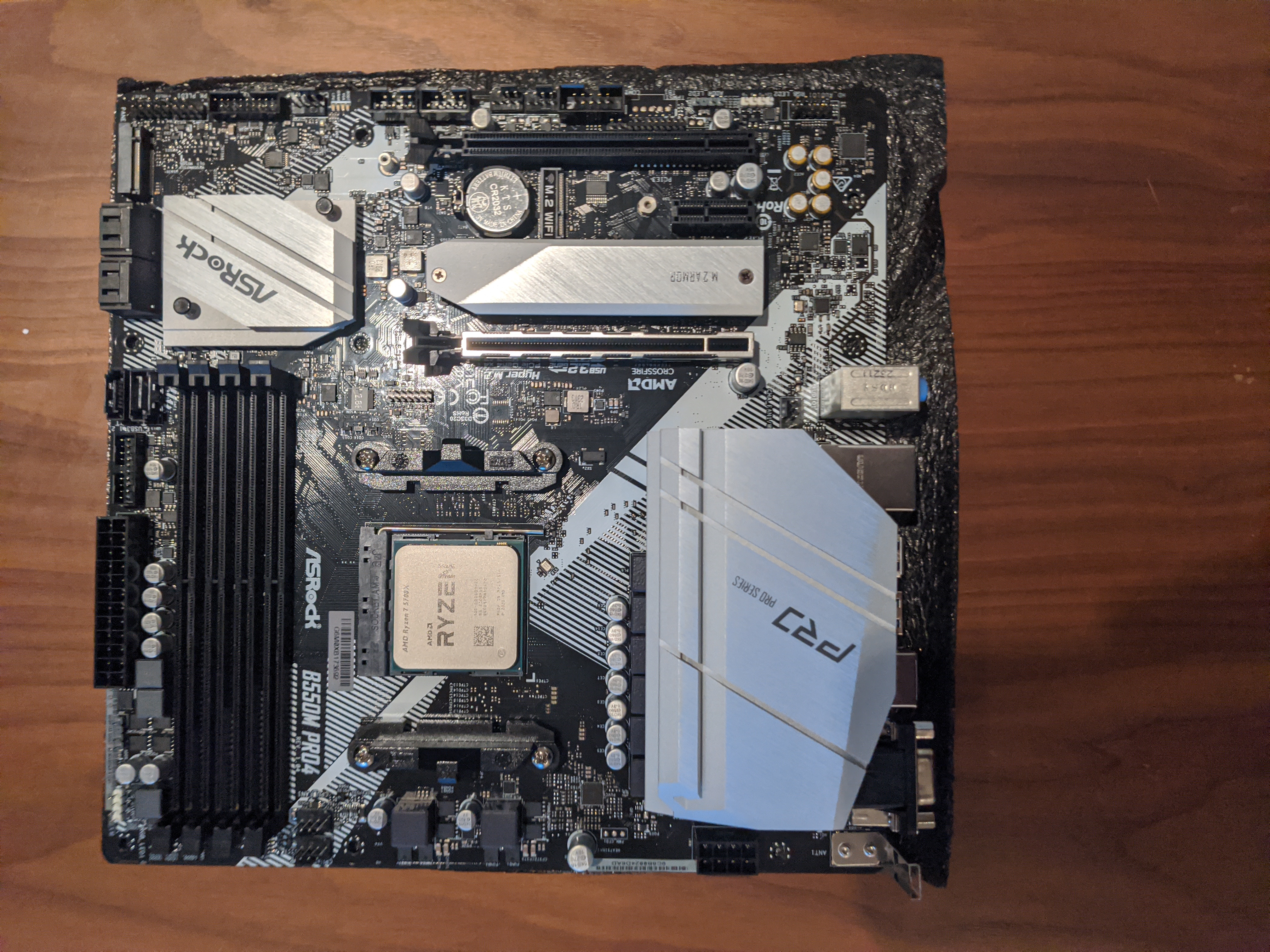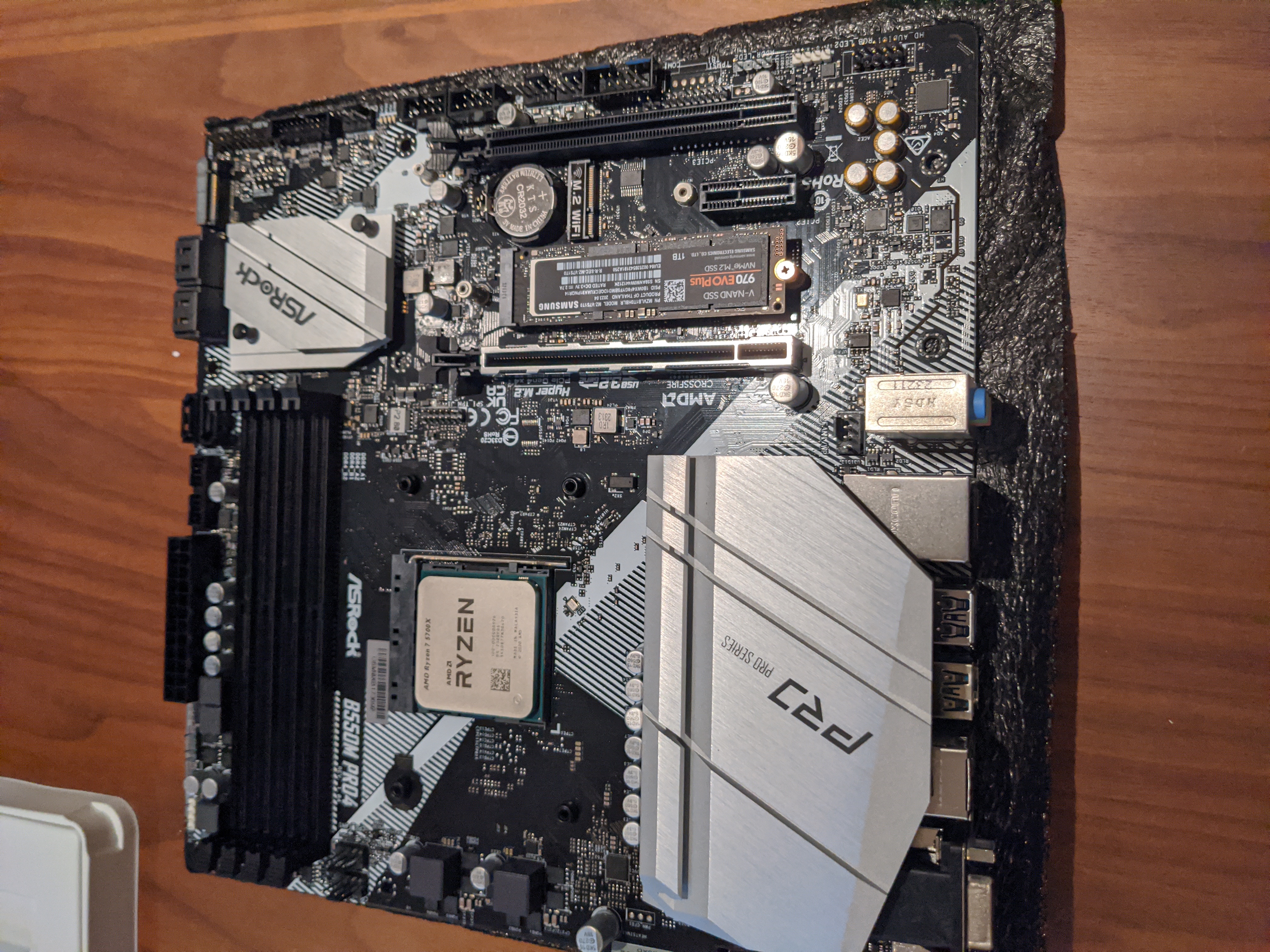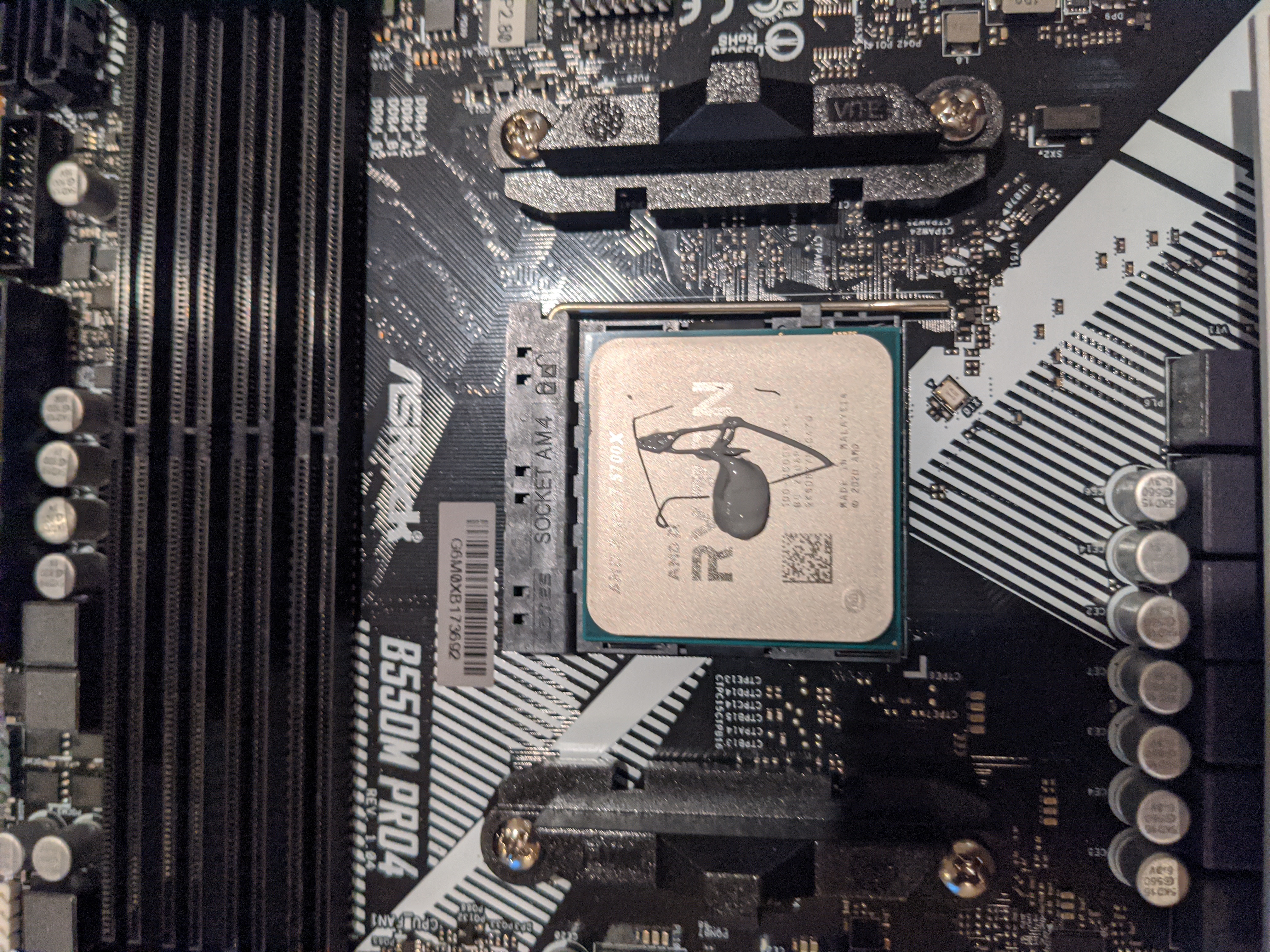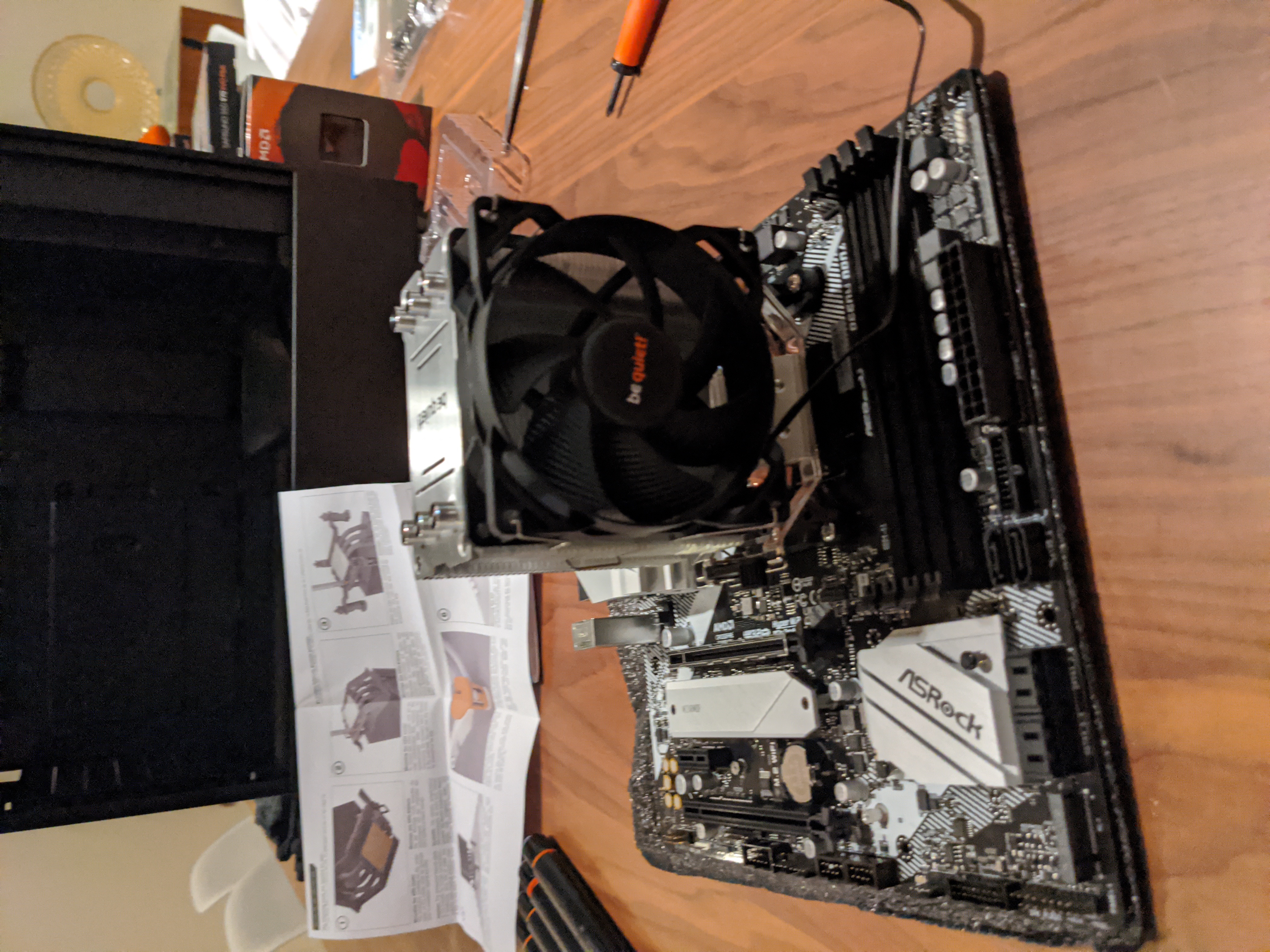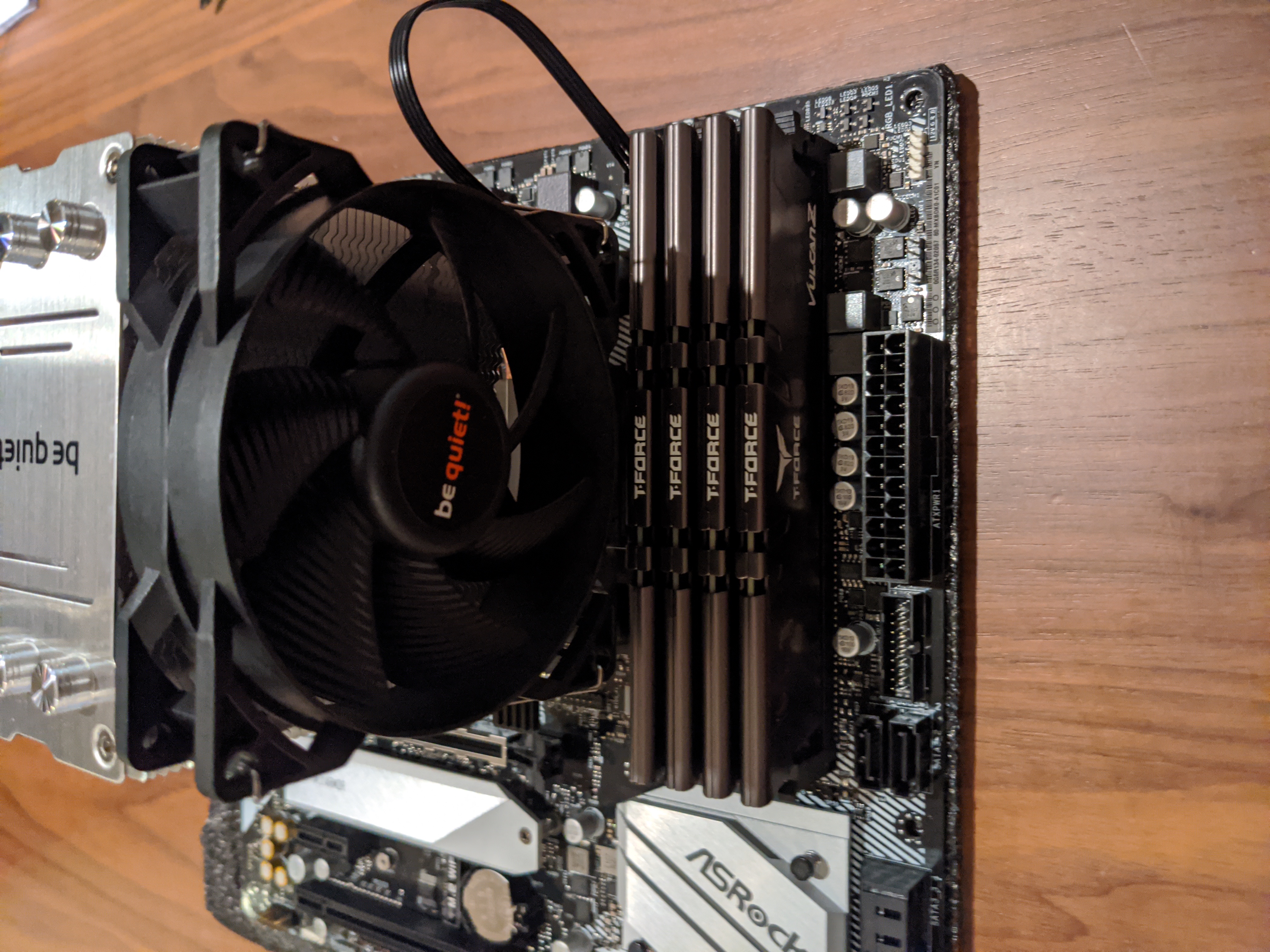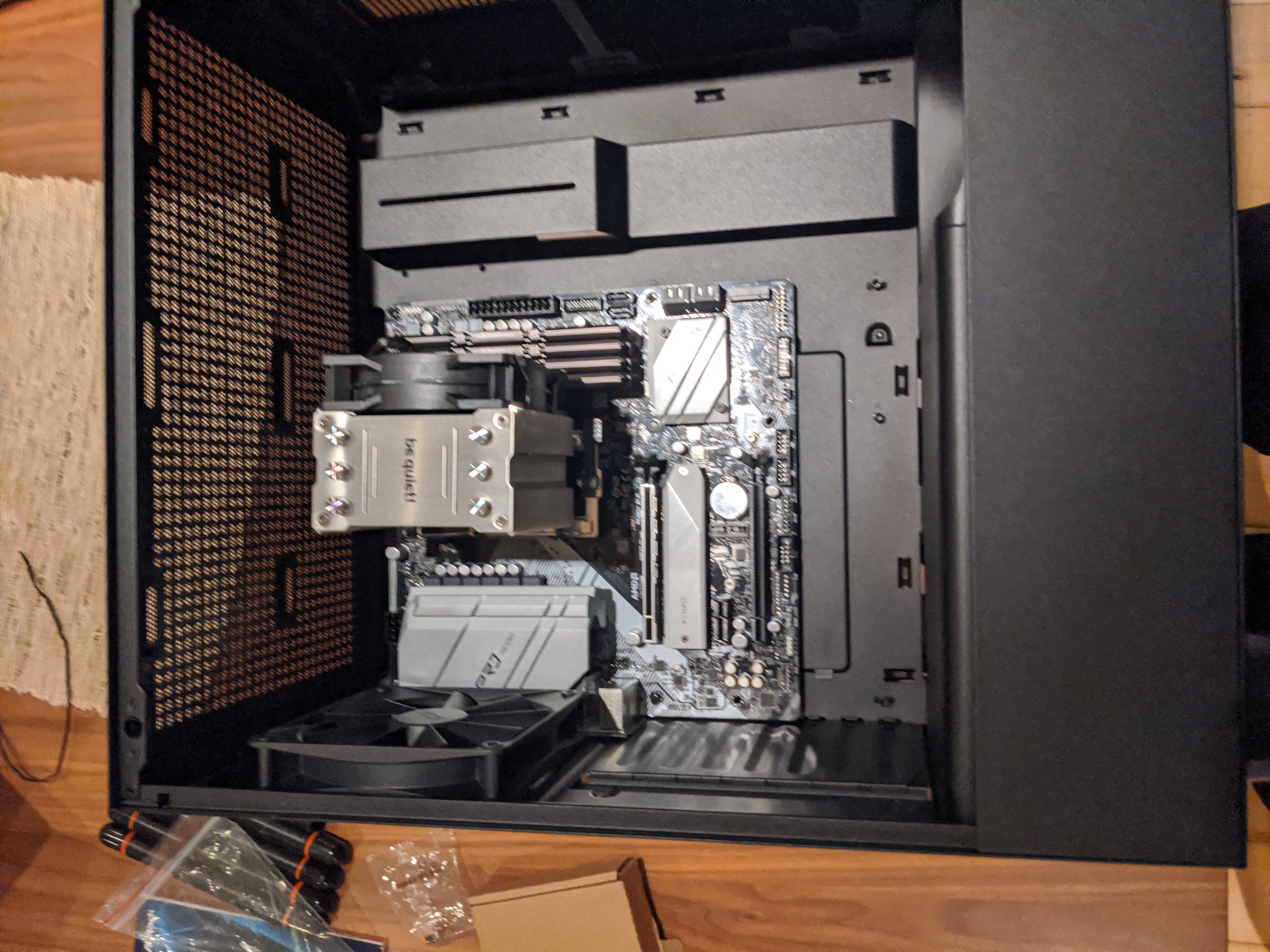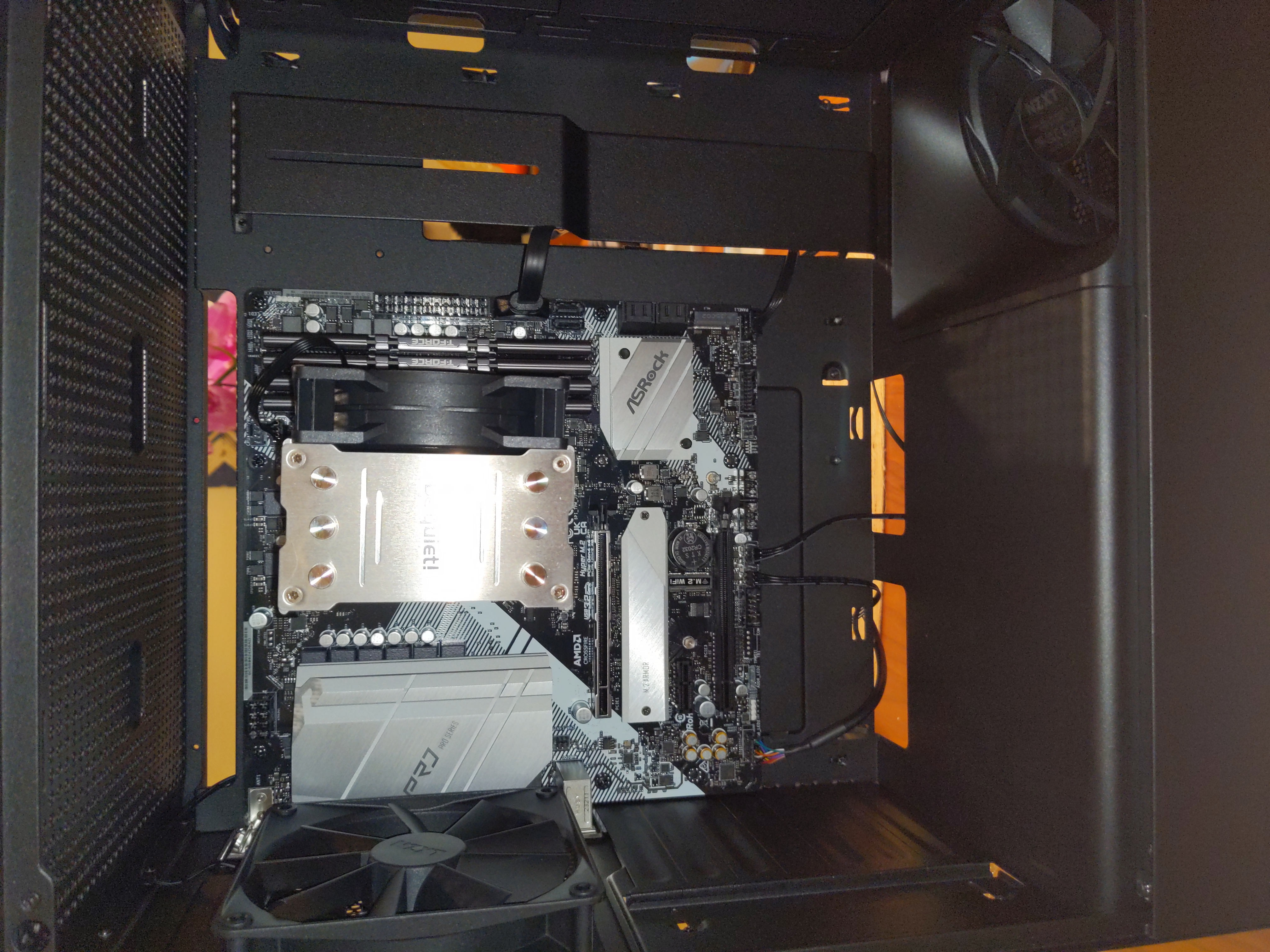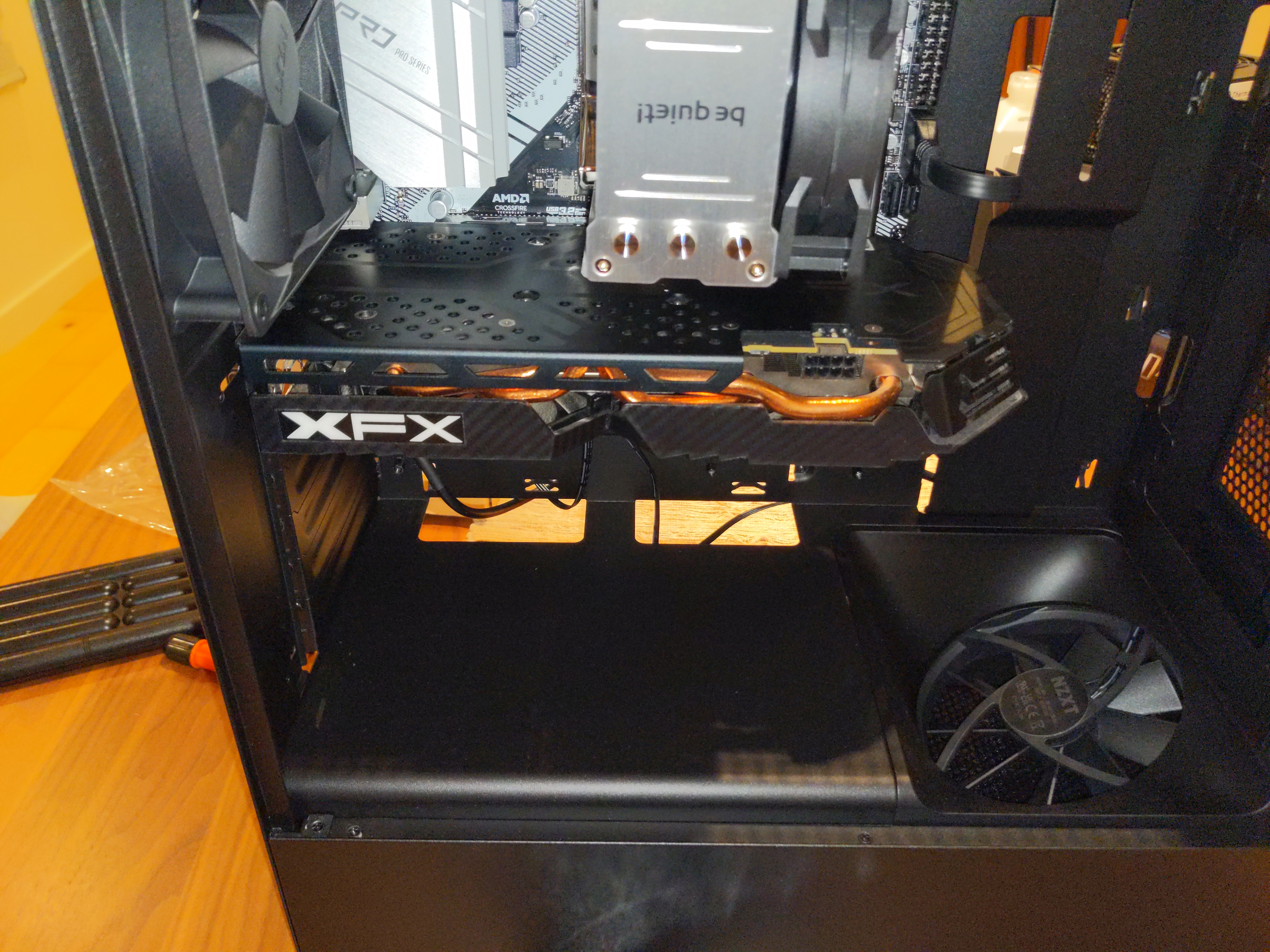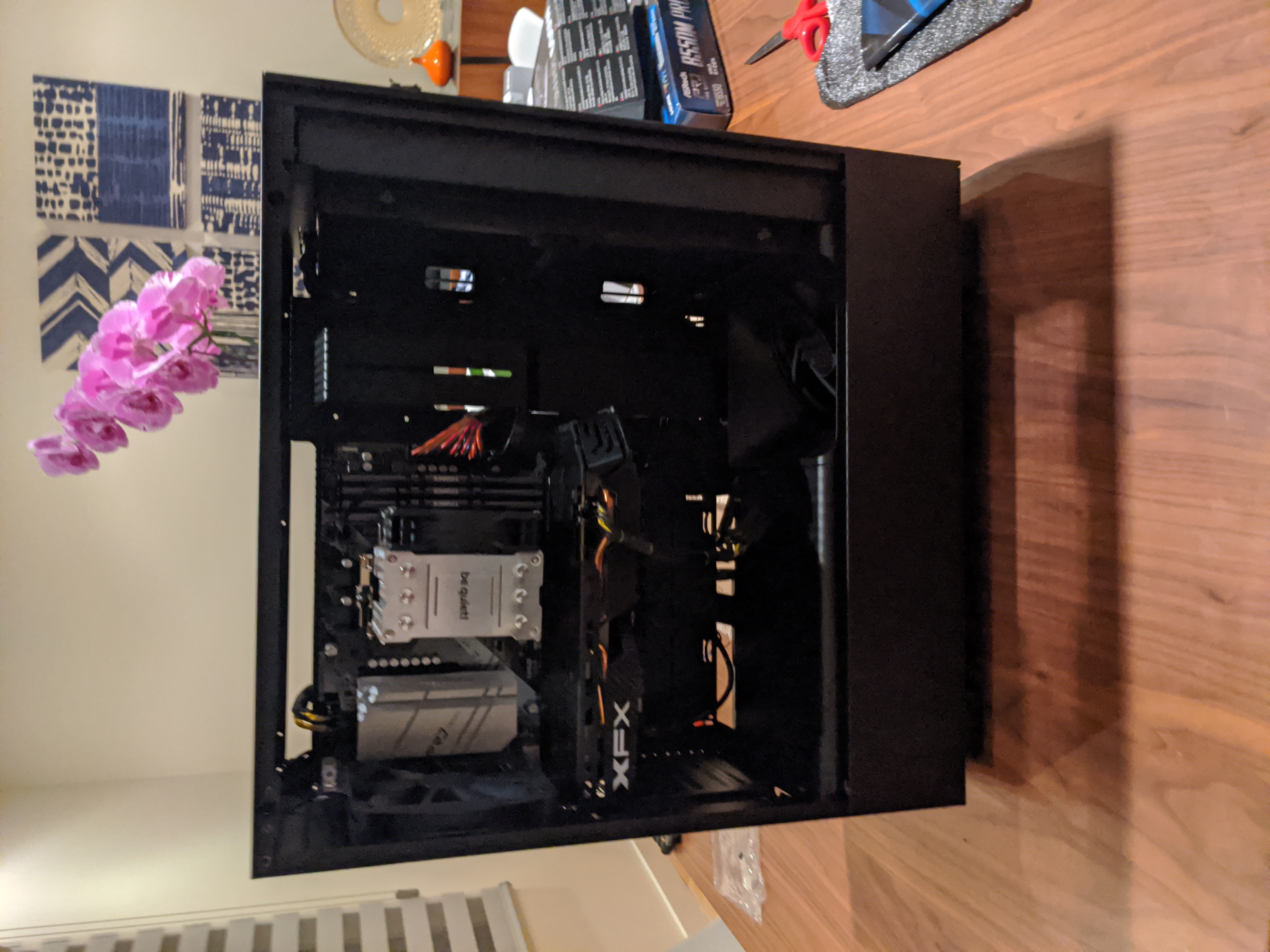Server Build...
Parts...
The server that I built for this project is the one that is currently running this website. I decided to go with a strong CPU and lots of RAM for this build. In the end, I ended up going with these parts:
| Item | Role |
|---|---|
| Ryzen 7 5700X | CPU |
| AMD Radeon RX 580 | GPU |
| TeamGroup 64 GB DDR4 | RAM |
| ASROCK b550m pro4 | Motherboard |
| Samsung 970 EVO Plus | Storage |
| Be Quiet Pure Rock Slim 2 | CPU Cooler |
| NZXT H5 Flow | Case |
Normally, servers don't contain GPUs but my friend had given me his old GPU and I wanted to be able to play video games, which need a GPU, remotely. This server lets me stream games or any other desktop application to a remote computer using Sunshine
Process...
Motherboard...
CPU...
The first step is to install the CPU into the motherboard:
SSD...
Next, I installed the SSD storage:
Thermal Paste...
I then applied thermal paste to the CPU. Thermal paste is used to transfer the heat between the CPU and the Cooler more effectively.
CPU Cooler...
I then installed the CPU Cooler and its fan:
RAM...
Next, I installed the RAM:
Case...
Installing Motherboard In Case...
After I had installed the RAM, I was done installing things on the motherboard. I then moved on to the case. First I installed the motherboard into the case:
Plugging In Case Accessories...
After installing the motherboard into the case, I plugged in things like the fans and the power button:
GPU...
I then installed the GPU:
Power Supply...
After installing the GPU, I installed the power supply and connected all of the cables to the correct places. The power supply provides power to the components in the server.
Done...
Finally, I closed up the case and I was done!
Software...
I installed Arch Linux on my server. Arch Linux definitely isn't the best choice for a server because it is rolling release, meaning that software is updated as soon as updates become available, as compared to another distro like Debian which has updates come out at set times.
I ended up having many issues installing Arch. The first one that I encountered was the computer not booting any type of Linux. When I booted the Arch USB, the screen would just go black after I saw the message [Triggering Uevents]. I am still unsure of the cause but it seems like there was some issue that booting off a USB was causing. I was able to solve this issue by adding acpi=off debug nomodeset to the Linux kernel parameters. The next issue that I ran into was after I installed the OS, it didn't show up in the BIOS. This ended up being because a partition on one drive had the same UUID as a partition on the other. After regenerating the UUIDs, I was finally able to boot into Arch Linux.
Old Server...
Before I upgraded to this server, I had a server that looked like this:
I am glad to have been able to upgrade my server. The old server also had many issues, for example, the worst one was the internet speeds. Since the server was loud, I had to keep it in another room and I wasn't able to use a wired connection.
